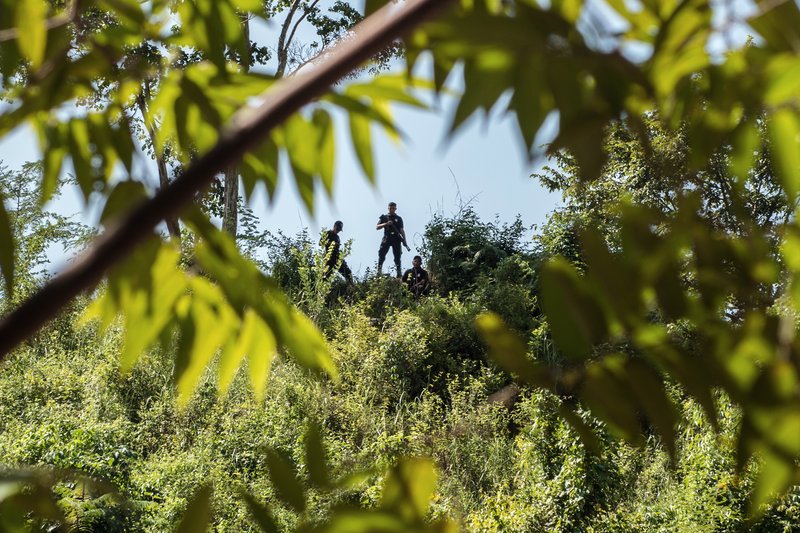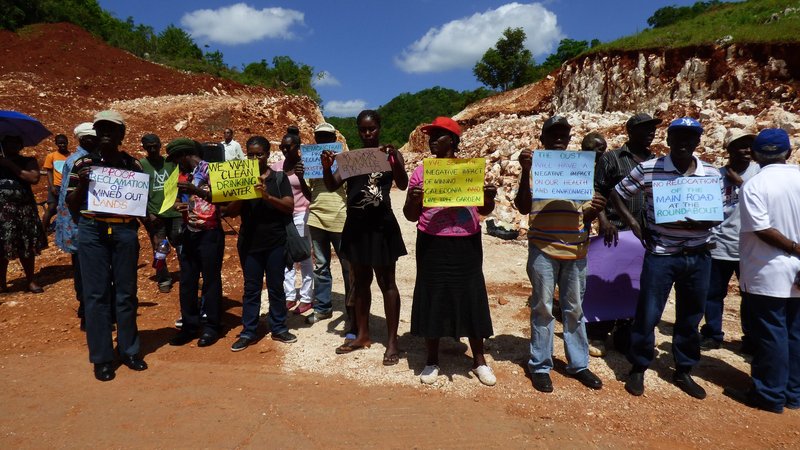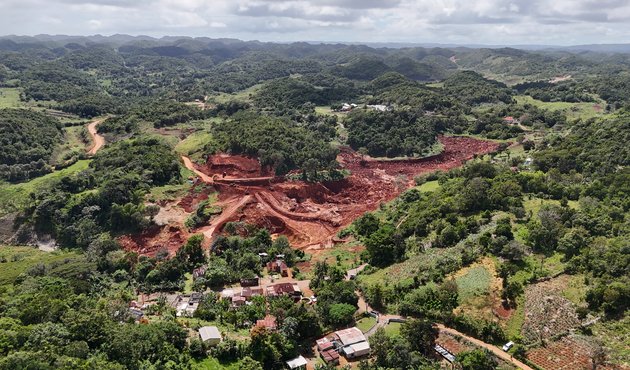Attacks on land and environmental defenders in the Caribbean have often been overshadowed by the dangers faced by defenders in mainland Latin America, but protecting their rights is just as crucial for preserving the environment
Across the world, people who speak up to protect their environment and communities face growing risks.
Land and environmental defenders are on the frontline of the struggle to protect our planet from powerful interests’ harmful exploitation of natural resources – the same resources that sustain defenders’ own livelihoods and are critical for preventing climate catastrophe.
Often, defenders’ resistance comes at the cost of their freedom, safety and even lives. The Caribbean is no exception.
In 2023, Global Witness found that 196 land and environmental defenders had been killed worldwide, 85% of which were from Latin America, making it the most dangerous region to be a land and environmental defender.
But while much attention has focused on mainland Latin America, the Caribbean’s defenders face their own threats, often with less visibility.
A recent event in Saint Kitts and Nevis brought this into sharper focus – the first official Escazú Agreement event in the Caribbean for the Third Forum on Human Rights Defenders in Environmental Matters in Latin America and the Caribbean.
What is the Escazú Agreement?
The Escazú Agreement is a landmark treaty for Latin America and the Caribbean. It guarantees three key rights:
- Access to environmental information
- Public participation in environmental decision-making
- Access to environmental justice and a healthy and sustainable environment, including the protection of human rights defenders on environmental matters
Critically, it is the first treaty of its kind to include specific measures for the protection of environmental defenders, those who risk their safety to defend the environment and land rights.
So far, 25 countries have signed the agreement and 17 have ratified it, including seven Caribbean nations.
Environmental defenders in the Caribbean
Although the Caribbean is among the most vulnerable regions to climate change in the world, the plight of Caribbean defenders is often overshadowed by mainland Latin America. But the Caribbean is far from risk-free for defenders.
Since we started documenting attacks in 2012, we’ve recorded three killings in the Caribbean islands, all from the Dominican Republic. But looking more broadly, we’ve documented 45 killings in the Caribbean region of Honduras – disproportionately affecting Afro-descendants – and at least 41 cases for the Caribbean region of Nicaragua, most of them Indigenous People.

Private security guarding the Agua Zarca dam project. The ex-head of private security for the dam is one of seven people arrested for the killing of Berta Cáceres. Giles Clarke / Global Witness
Killings may be rarer than elsewhere in Latin America, but defenders still routinely face threats, harassment and smear campaigns. Non-lethal attacks against environmental defenders, as the ALLIED coalition reports, are serious human rights violations and can lead to more extreme attacks.
The Global Atlas of Environmental Justice reports that there are over a dozen ongoing conflicts related to environmental matters in the Caribbean.
During the Escazú Defenders’ Forum, we heard firsthand from defenders and environmental organisations from the Caribbean.
Third Forum on Human Rights Defenders in Environmental Matters in Latin America and the Caribbean
The Escazú Agreement had its first official event on a Caribbean island, at the Third Forum on Human Rights Defenders in Environmental Matters in Latin America and the Caribbean, in Saint Kitts and Nevis.
The main goal of the forum was to look at how to advance the work of the Action Plan on Human Rights Defenders in Environmental Matters, which was agreed last year at the COP 3 of Escazú.

The forum offered a vital platform for Caribbean defenders to share their experience and connect with allies across the region.
Speakers described the hostile environment for defenders in the Caribbean. Many have been verbally attacked by politicians or companies through public statements. Some have been targeted by newspaper campaigns smearing their name for opposing extractive industries and tourism-related projects that impact the environment and livelihoods of communities in the Caribbean.
Attendees also described cases of criminalisation with the law used against defenders themselves, as well as anonymous threats sent to them over messaging platforms.
A member of the Jamaica Environment Trust (JET) spoke of facing intimidation and reprisals for denouncing the impacts of the bauxite-alumina industry in Jamaica.
JET said they have experienced verbal abuse and attempts to damage their credibility through targeted social media campaigns labelling them as “hysterical”, “anti-development” and – one familiar to all environmental activists – “tree huggers”.
The Action Plan
Under Article 9 of the Escazú Agreement, states must guarantee a safe environment for those defending environmental rights.
The Action Plan on Human Rights Defenders in Environmental Matters, agreed at last year’s COP 3, is supposed to turn that promise into reality by 2030. Its priorities are:
- Building knowledge about risks to defenders
- Publicly recognising defenders’ central role in protecting human rights and the environment
- Strengthening national protections of defenders’ rights
- Tracking progress of the Agreement being actioned
But progress has been slow. The regional implementation of the plan has been slow, and there isn’t enough information on how parties to the treaty are planning on incorporating the Action Plan in their implementation of Escazú.
One critical aspect of the Action Plan is to come up with a clear diagnosis of the situation of defenders in the region. At Global Witness, we are well aware of the challenges involved in producing data on attacks against defenders. And while civil society can play a big role in collecting and analysing this data, the main responsibility for documenting attacks must fall on states themselves.
Placing defender voices front and centre
One clear message emerged from the forum: solutions must be collective and defender-led. Solutions that are imposed from the top-down risk misinterpreting the daily reality that defenders face and may miss the mark of protections that they actually need.
As the Forum looked at how best to develop a plan that answers environmental defenders’ challenges, Karol Sanabria of the Colombian organisation Ambiente y Sociedad said that “The best way to advance implementation is with public participation. Environmental advocates know both the needs and the most appropriate responses.”
She also emphasised how protection of defenders should recognise not just individual activists but communities – Indigenous, Afro-descendants and campesino groups, for instance – as their struggles are mostly collective, so the responses should be collective as well.
What's next?
Next year, COP4 of Escazú will be a critical moment to revise how these plans are developing, but there is a lot of work that needs to happen before then.
For the Caribbean, this is a pivotal moment. We know that civil society will remain engaged, but governments must step up, with more of them ratifying the agreement and developing their implementation plans. The international community must also provide stronger technical, political but also financial support to help enable its implementation.
Because protecting those who defend our planet isn’t just a legal obligation – it’s a moral one. An obligation we owe not just to individual defenders, but to the communities and environment they risk everything to defend - a struggle which ultimately protects us all.
Read this page in



